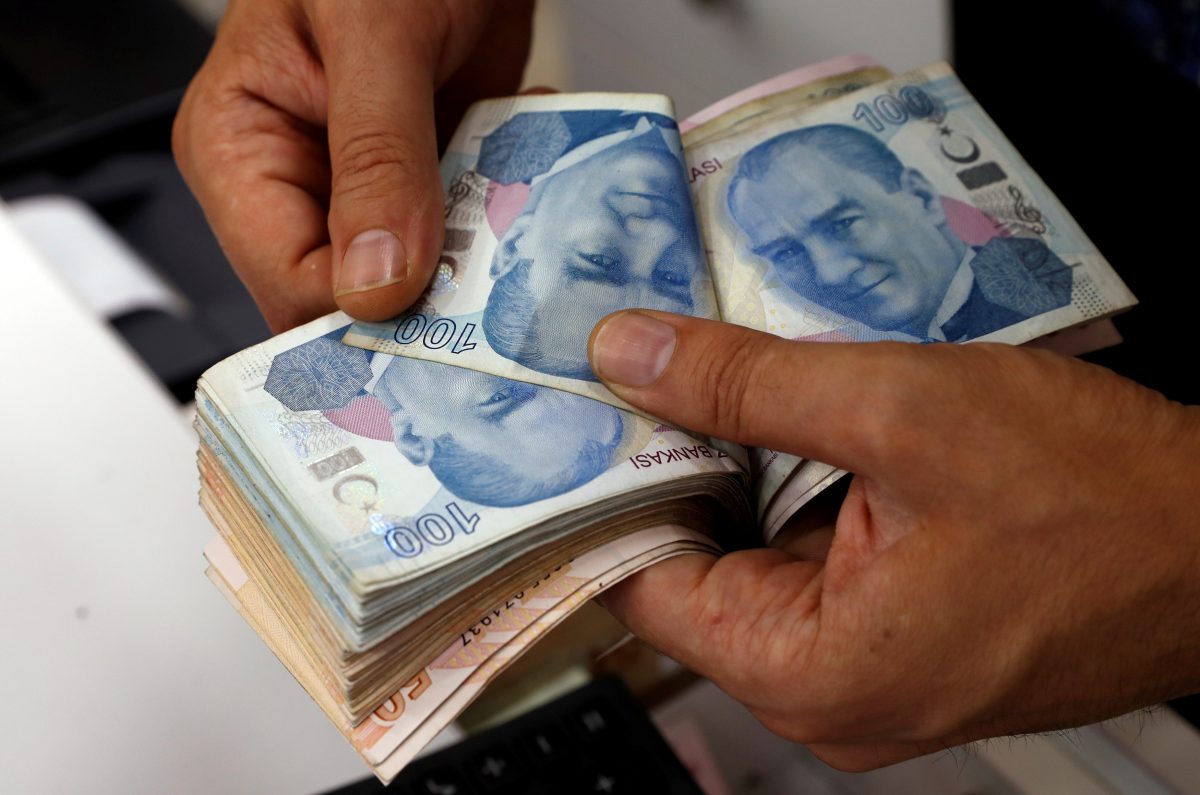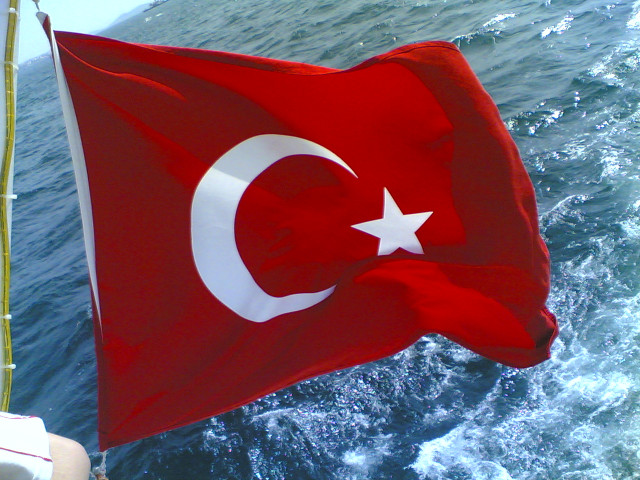Turkey’s Inflation Rate Spikes in 2022
The inflation rate in Turkey is spiraling out of control, fueled by a collapsing currency, global inflationary pressures, and easing monetary policy. While the Turkish government has promised relief, the situation is intensifying, affecting households across the country. Has inflation peaked or will it continue to spike?
Turkey Inflation Rate in October 2022
The annual Turkey inflation rate increased to a 24-year high of 85.51 percent in October, up from 83.45 percent in September, according to the Turkish Statistical Institute.
The figure, which was the highest level since June 1998, came in just below economists’ expectations of 85.6 percent.
Compared to the same period a year ago, rampant price inflation was driven by transportation (117.2 percent), food (99.1 percent), housing and utilities (85.2 percent), and apparel (41.3 percent).
On a month-over-month basis, the inflation rate jumped to 3.54 percent, up from 3.08 percent in the previous month. The headline print was also slightly under the market estimate of 3.6 percent.
Producer prices also experienced a dramatic surge last month. The Producer Price Index (PPI) spiked to 157.69 percent year over year, up from 151.5 percent. The monthly PPI also advanced to 7.83 percent, up from 4.78 percent.
The annual producer inflation accelerated because of higher prices in four critical sectors of the economy: electricity and gas (554.56 percent), mining and quarrying (162.06 percent), manufacturing (122.97 percent), and water supply (109.45 percent). In addition, prices also climbed for nondurable consumer goods (132.88 percent), intermediate goods (123.12 percent), durable consumer goods (98.65 percent), and capital goods (95.61 percent).
Some experts believe this might be the peak for headline inflation, but only if the Turkish currency, the lira, does not weaken further. Year to date, the lira has lost about 40 percent against the U.S. dollar. Over the last 12 months, the currency has plummeted roughly 92 percent against the greenback.
Inflation Rate History
Turkey has suffered from inflationary problems before, most notably from the late 1970s until the late 1990s, with the annual inflation rate exceeding 100 percent on multiple occasions. But it had subsided by the turn of the century, as rates were mostly below 10 percent prior to the coronavirus pandemic.
Turkey’s persistent inflationary troubles for 20 years were driven by many factors, including distortions in the economy, constrained imports, import premiums, tepid output growth, and deteriorating income distribution. Moreover, disinflationary public pursuits that emphasized economic growth and cheap lending backfired, resulting in a weakening lira and price instability.
“There is no mystery as to why inflation persisted. Throughout the 1980s, monetary expansion continued and by all estimates was the crucial determining factor in the inflation rate,” wrote economist Anne Krueger in a paper (pdf) published in 1995 by the National Bureau of Economic Research (NBER).
World Bank Report
The World Bank forecast that Turkey’s economy will slow to 2.7 percent in 2023, down from an estimated GDP growth rate of 4.7 percent this year. The organization listed inflation as the primary issue facing the world’s eighteenth-largest economy.
“Economic activity is expected to weaken in the second half of 2022, as macroeconomic volatility intensifies, inflation erodes the purchasing power of households that can no longer front-load consumption, and external demand weakens,” the World Bank said in an October report.
The report’s authors further noted that banks’ capital buffers are eroding, the government’s fiscal resources are dissipating, and poverty rates are above pre-2019 levels.
“[T]he poverty rate is projected to remain above pre-2019 levels due to persistently high inflation that affects the lowest-income households the most as they spend a higher share of income on items like food that face higher than average inflation,” it stated.
Why Is Turkish Inflation So High?
As the rest of the world is tightening monetary policy by raising interest rates, the Central Bank of the Republic of Turkey (CBRT), led by Sahap Kavcıoglu, is engaging in the opposite by slashing benchmark policy rates. This, experts purport, is fueling the cost-of-living crisis in the nation.
At the October Monetary Policy Committee (MPC) meeting, officials cut interest rates by 150 basis points (bps), to 10.5 percent, down from 12 percent. The overnight lending rate and the borrowing rate were also reduced by 150 bps, to 12 percent and 9 percent, respectively.
Muhammet Mercan, ING’s chief economist in Turkey, explained that Turkey’s central bank is trying to facilitate an environment of supportive financial conditions to ensure steady growth in multiple sectors of the economy and the labor market. The central bank, noted Mercan, also aims to reverse the downward trend in foreign demand, caused by uncertainty and risk.
“Further signs of a slowdown in economic activity as well as recent stability in FX [foreign exchange] reserves along with outperformance of the currency versus peers are factors behind the CBRT cut this month,” he wrote. “However, ongoing widening pressures on the current account and subdued capital flows imply the possibility of further drawdowns in reserves. Today’s move will do little to address Turkey’s inflationary challenges. The current policy setting does not prioritize disinflation, and inflation will likely remain elevated in the near term.”
Over the last year, the institution has adopted an unorthodox approach to reining in inflation by easing policy and expanding the pace and severity of rate cuts. Since September 2021, CBRT policymakers have approved 850 basis points’ worth of cuts, despite a cratering lira, a sizable current account deficit, and skyrocketing consumer prices. The central bank is ostensibly taking its cues from President Recep Tayyip Erdogan, who believes that the best practice to fight inflation is to reduce interest rates and grow the economy.
“My biggest battle is against interest. My biggest enemy is interest. We lowered the interest rate to 12 percent,” the president told an audience during an event in September. “Is that enough? It is not enough. This needs to come down further.”
Erdogan recently pledged in a speech last month that “we will save our investors and citizens from the oppression of interest rates.”
Turkey’s economic data have been mixed in recent months. The Istanbul Chamber of Industry Manufacturing Purchasing Managers’ Index (PMI), for example, has been stuck in contraction territory since March, falling to as low as 46.4 in October. But industrial production rose 2.4 percent month over month in August, while retail sales advanced 3.7 percent. October exports and imports eased to $21.3 billion and $29.3 billion, respectively.
The concern is that because the economy is holding steady and President Erdogan is committed to slashing interest rates, the CBRT could approve another rate cut at the November policy meeting, which would contribute to more inflation.
“The looming shadow of Erdogan lurking over monetary policy is driving irregular and contradictory moves to interest rates, with uncertainty from analysts over how the country will behave next,” Mercan added.
Trading Economics is penciling in another cut of 150 basis points.
The CBRT “will remain under pressure from President Erdogan for looser policy,” stated Liam Peach, senior emerging markets economist at London-based Capital Economics, in a note.




:max_bytes(150000):strip_icc()/TAL-header-spices-market-istanbul-MUSTEATTURKEY1025-b580a3e6afe84d6fbb1aedcc914c2826.jpg)
